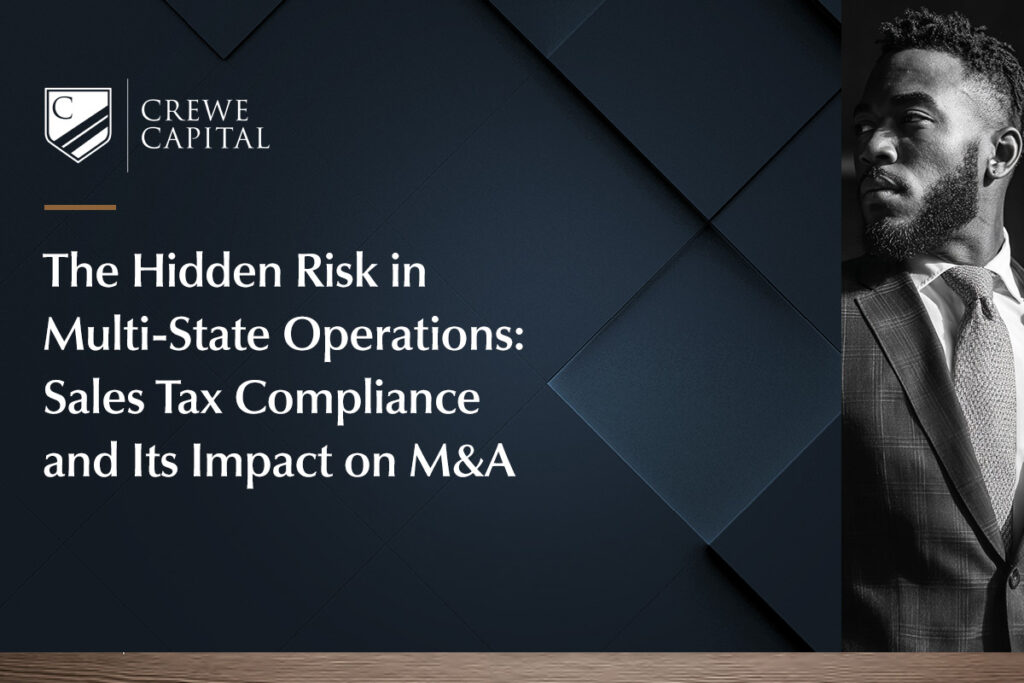When selling a business, one of the primary questions a seller often asks is, “What is my business worth?” This curiosity is natural, as the valuation of a business is frequently one of the most crucial factors of an M&A process. However, many business owners are unfamiliar with the various valuation methods that strategic buyers, private equity firms, and other acquirers use to arrive at a purchase price. Understanding how your business is valued can help set realistic expectations, enhance strategic planning, improve negotiation leverage, and ultimately maximize the value of your business.
Although business valuation can be complex, involving various methods and calculations, it’s important for sellers to have a basic understanding of these processes. This blog post will simplify and explain four of the most commonly used valuation methods, helping sellers become more informed and confident as they approach a potential transaction.
Comparable Public Companies Method
The Comparable Public Companies method, often referred to as “comps”, is a business valuation approach that compares your business to publicly traded companies with similar characteristics. This method is based on the principle that similar companies in the same industry should have similar valuation metrics. Key multiples used in this method include Enterprise Value to EBITDA (EV/EBITDA) and Enterprise Value to Revenue (EV/Revenue). To be considered a suitable comp, a company should operate in the same industry and ideally be of similar size, target customer base, geographic presence, and maturity level. Once the relevant multiples are identified, they are applied to your company’s financial metrics—typically on a trailing twelve months (TTM) basis. For example, if the selected comparable companies have an average EV/EBITDA multiple of 8x, you would multiply this by your company’s TTM EBITDA to derive an enterprise value.
This method is particularly useful for benchmarking purposes, as it provides a snapshot of how the market values similar businesses. However, public comparables can be affected by market conditions, such as investor sentiment, economic cycles, and industry-specific trends, which may cause fluctuations in multiples. Additionally, while this valuation method is convenient due to the availability of public company financial information, finding an ideal comparable company in the public markets can be challenging. Publicly traded companies often operate numerous business lines, making it difficult to identify a true ”pure play” comparable. Moreover, valuation multiples derived from public comparables are generally higher than those a private, lower middle-market company might receive. This discrepancy is due to factors such as the larger scale of public companies, their broader diversification, lower perceived risk, and the liquidity premium associated with being publicly traded.
Precedent Transactions Method
The Precedent Transactions method, which functions similarly to the Public Comparables method, values a business based on financial multiples derived from recent M&A transactions involving similar companies. Instead of using publicly traded companies, this method examines what buyers have actually paid for comparable businesses in recent transactions. Common multiples like EV/EBITDA and EV/Revenue are used, with the comps ideally being in the same industry, revenue size and maturity level as the business being valued. These multiples are then applied to your company’s TTM financial data to arrive at an enterprise value.
A key characteristic of the Precedent Transactions method is the inclusion of a control premium in the transaction price. This premium reflects the additional value a buyer is willing to pay to gain control of a business. When using this valuation method, it is crucial to understand the specific circumstances of each transaction, as factors such as market conditions, the strategic rationale behind the acquisition, and synergies expected by the buyer can significantly impact the multiples. For example, a transaction involving significant synergies or a distressed sale may result in higher or lower multiples, respectively. Additionally, adjusting precedent transactions for differences in deal structures, such as asset versus stock purchases, can further complicate the analysis. There can also be some blurring of the metrics if there have been adjustments to the financial information, which are not always reported.
While the Precedent Transactions method is an effective way to gauge how the market currently values companies similar to your own, obtaining financial data from private transactions can be challenging, as many companies prefer not to disclose the multiples applied in their M&A deals.
Discounted Cash Flow Method
The Discounted Cash Flow (DCF) method is one of the more detailed and technical valuation approaches. This method values a business based on its projected future cash flows, which are then discounted back to their present value using an appropriate discount rate. Forecasts used in a DCF are typically derived from a company’s pro forma financial statements and are adjusted based on historic financial performance, market studies, strategic initiatives, and perceived risks to simulate the cash flows a company might generate over a 5- to 10-year period. A discount rate is then applied, reflecting the time value of money and the risk associated with the forecasted cash flows, to arrive at the present value of the company’s expected future cash flows. The selection of the discount rate often involves calculating the Weighted Average Cost of Capital (WACC), which takes into account the cost of equity, cost of debt, and the company’s capital structure.
Finally, a terminal value is calculated to represent the estimated value of the company at the end of the forecast period, capturing the value of all future cash flows beyond that period. This terminal value is typically calculated using the perpetuity growth method where inflation and growth offset each other. The present value of the expected future cash flows is then added to the present value of the terminal value to arrive at an enterprise value.
The DCF valuation method is often scrutinized for its reliance on key assumptions, such as the discount rate, future revenue growth, margins, capital expenditure requirements, etc. To address this, sensitivity analyses are used in a DCF to output a range of potential enterprise values as these assumptions are adjusted. These sensitivity analyses help identify how changes in key inputs can affect the valuation, providing a more comprehensive view of the potential risks and rewards. While no forecast is perfect and assumptions will inevitably vary, a DCF helps buyers account for risks in the estimate of future cash flows they can expect from a business and adjust the purchase price accordingly.
Leveraged Buyout Method
The Leveraged Buyout (LBO) method is primarily used by private equity firms to determine how much they can afford to pay for a business, based on the feasibility of buying it with a significant amount of debt. The key idea is to project the company’s future cash flows and assess whether these cash flows can service the debt used to finance the purchase while still providing an acceptable return to investors. Assumptions about how much debt a company can potentially service are directly influenced by the size, stability, and growth of the company’s EBITDA, as well as factors such as the company’s industry and assets. Private equity investors also consider the potential for covenants that might limit the company’s financial flexibility post-LBO, as well as the interest rate environment, which can impact the cost of borrowing. An added benefit of the LBO analysis is that it shows the financing capacity of a company, which can be helpful as owners assess their strategic alternatives.
After making assumptions about debt and forecasting future cash flows, private equity investors assess how much they can pay for a company while achieving a target return metric. A 30% equity internal rate of return (IRR) is a typical hurdle investors aim for when valuing a company through an LBO. Companies with strong profit margins, predictable revenue, and strategic growth prospects are typically viewed as “prime” candidates for an LBO, as they can raise and service a large amount of debt, reducing the total amount of equity capital a financial sponsor has to deploy in the acquisition. Over time, cash flows generated by the company are used to cover interest expenses, fund growth initiatives, and pay down debt, which increases equity value as the company grows. Many financial sponsors target an exit in their LBO, often after a five-year holding period, to realize returns on their investment.
Conclusion
Buyers will usually utilize several valuation methods to arrive at a final purchase price. It is important to remember that the output of these valuation methods isn’t a single definitive number, but rather a range of feasible valuations. The actual value of a company is what a buyer is willing to pay to acquire it. That means, no one can pinpoint what the value is unless they test the market. However, sophisticated buyers will run these same analyses when determining the price they are willing to pay, which is why it is important to understand them. Other factors affecting the price include the pool of potential buyers, the competitiveness of the auction process, the skill in marketing and negotiating the transaction, and the synergies that might be realized by the buyer. One of the most reliable ways to maximize the value of your company in a sale is to hire an investment bank. A sell-side advisor like Crewe Capital can ensure a competitive auction process takes place, compelling potential buyers to put their best foot forward. For an investment bank, the goal of any process is to exceed to the valuation range through a thorough and well-managed process.
Whether you are considering a sale in the near future or simply want to be prepared, it is important to understand how your business is valued. If you have any questions or would like to explore the valuation of your business further, our team at Crewe Capital would be happy to assist.





